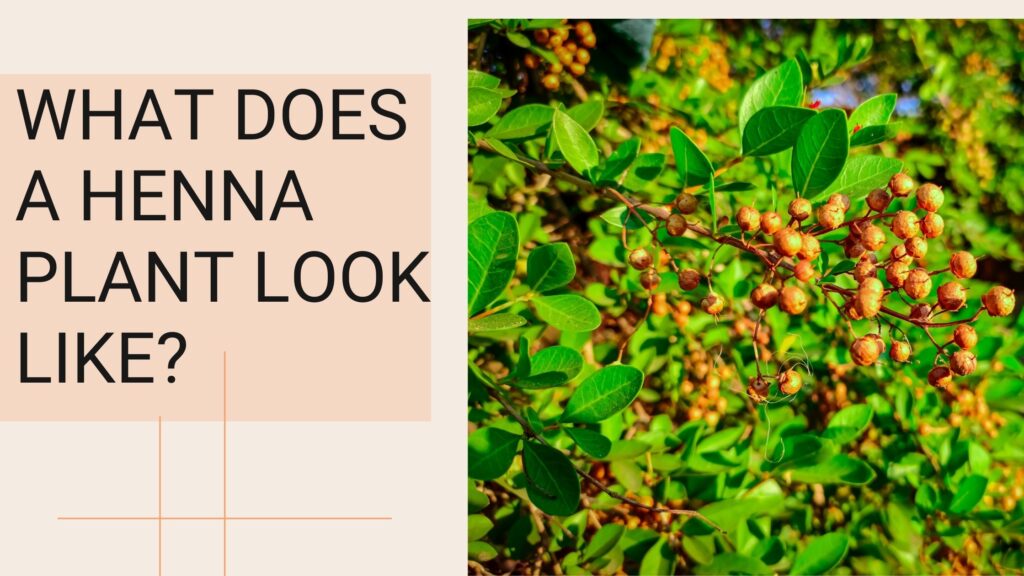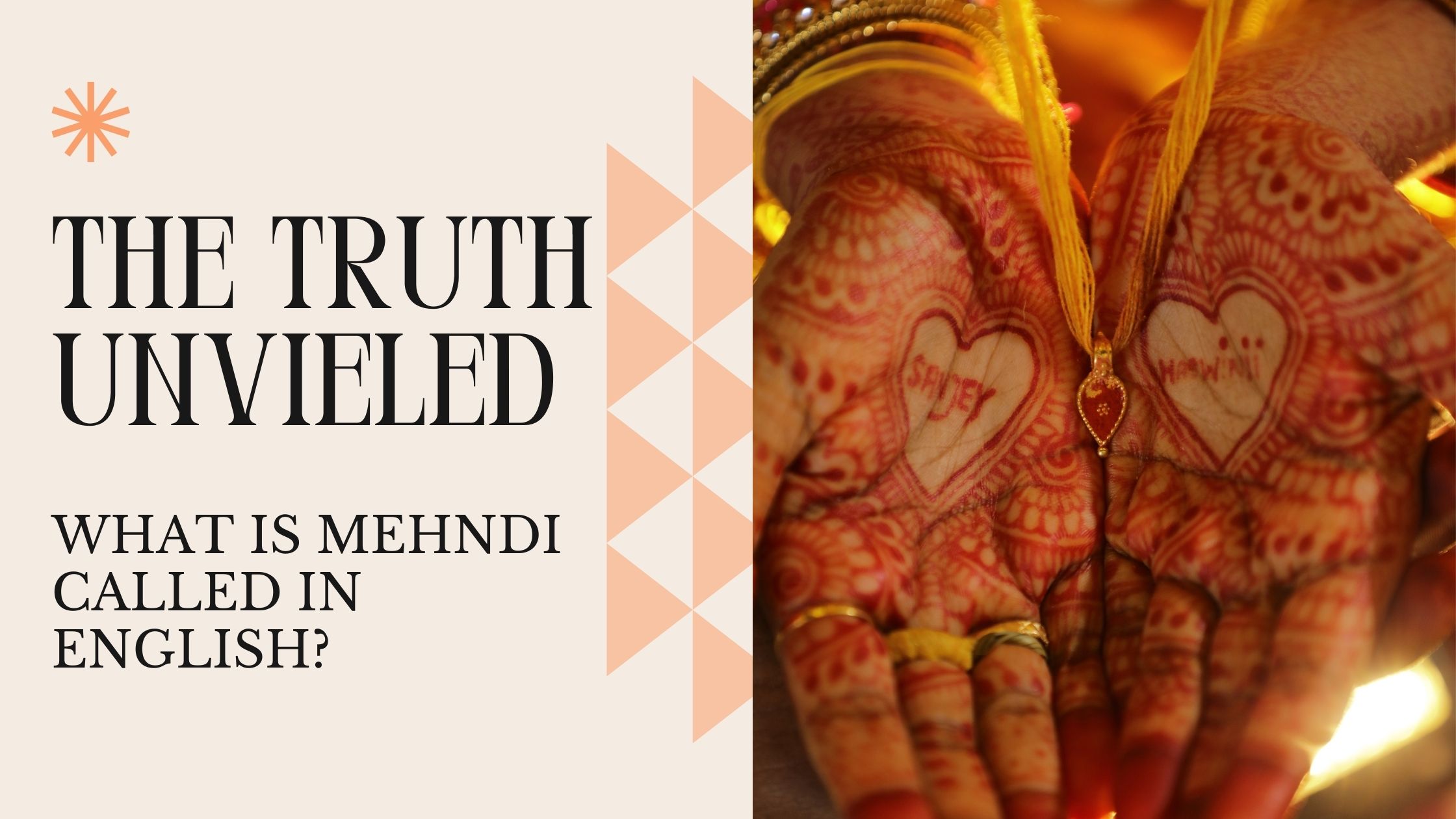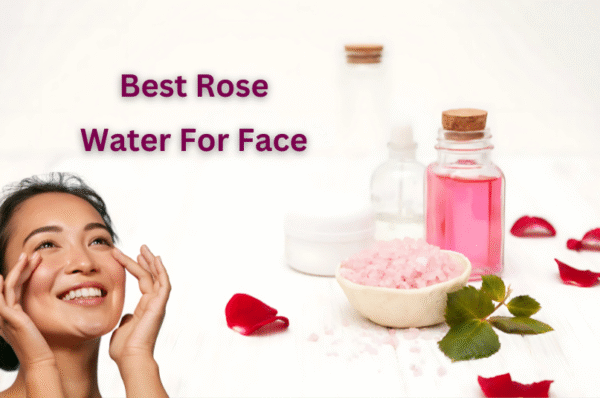Table of Contents
मेहंदी (mehndi) – What is Mehndi called in English?
Mehndi, a popular form of skin decoration, is widely known by its English name “henna.” Derived from the Arabic word “ḥinnā,” mehndi holds great cultural significance in South Asia, North Africa, and other parts of the world.
Mehndi is a form of body art that involves the use of mehndi paste made from the henna plant. The rich brown-red color of mehndi symbolizes love and prosperity, making it an important part of various festivals and ceremonies, especially Indian weddings.
The art of applying mehndi is referred to as mehndi design or henna design. It involves intricate patterns and delicate designs, often incorporating floral patterns.
Mehndi is not only used for temporary tattoos; it is also utilized as a natural hair dye and in various cosmetic products. However, it is important to beware of black henna, as it may cause skin allergies and is not derived from natural henna.
What is Henna?
Henna, also known as mehndi, is a form of body art that holds cultural significance in various regions around the world. It is derived from the henna plant and is commonly used for creating temporary tattoos, natural hair dye, and cosmetic products. Henna is often chosen for special occasions due to its intricate patterns and elaborate designs.
The color of henna is often used to symbolize love and prosperity, adding a traditional touch to celebrations. However, caution should be exercised with black henna, as it can cause skin allergies and is not derived from natural henna. Henna’s cultural heritage and artistic ability continue to captivate people with its beauty and significance.
History of Henna
Henna, also known as Mehndi, has a rich history that dates back thousands of years. Its origins can be traced to ancient Egypt, where it was used for medicinal and cooling purposes. From there, it spread to the Eastern Persian empires and eventually made its way to the Indian Subcontinent.
In the Indian Subcontinent, henna gained significant importance during the Mughal Empire. It became an integral part of religious and cultural traditions, particularly in Hindu and Muslim weddings. The intricate patterns and designs symbolized joy, beauty, and good luck.
Over time, henna evolved from a medicinal plant to a form of body art. Today, it is widely recognized as a popular temporary tattoo and a beautiful form of skin decoration. Henna pastes are made using crushed henna leaves, lemon juice, and other natural ingredients. When applied to the skin, the dye leaves behind intricate designs that gradually darken over time.
As an art form, henna is known for its elaborate and intricate designs, often featuring floral patterns and Arabic motifs. To achieve a darker color, it is recommended to keep the henna paste on the skin for a longer period of time before gently removing it. Additionally, applying a mixture of lemon juice on top of the dried henna design can help intensify the color.
Henna is not only used for cosmetic purposes but also as a hair dye and for its cooling properties. Its deep cultural heritage and significance in various traditions make henna an essential part of celebrations and rituals across South Asia and North Africa.
Types of Body Art with Henna
Henna is a versatile plant that is used to create various types of body art. One of the most popular forms of henna body art is henna patterns. These intricate designs are carefully drawn on the skin using henna paste, resulting in beautiful temporary tattoos.
In addition to henna patterns, henna is also commonly used for bridal makeup. In South Asian weddings, brides traditionally decorate their hands and feet with intricate henna designs. This bridal henna, also known as mehndi, is considered an essential part of the wedding preparations.
Temporary tattoos are another type of body art that can be created using henna. These temporary henna tattoos are typically applied on the hands, arms, or feet, and they provide a unique and artistic way for individuals to express themselves. Henna temporary tattoos can last for up to a few weeks, allowing people to experiment with different designs and styles.
The cultural significance of henna body art, especially in South Asian weddings, cannot be overstated. It is deeply rooted in the traditions and customs of the region, and it is an integral part of the bride’s overall look. Henna patterns and bridal makeup with henna are not only aesthetically pleasing but also hold deep cultural and symbolic meanings.
Henna Plant

The henna plant, also known as Lawsonia inermis, is a flowering plant native to South Asia and North Africa. It is cultivated for its leaves, which contain a natural dye called lawsone. The leaves of the henna plant are dried, ground into a powder, and then mixed with various liquids to create henna pastes. These henna pastes can be used for a variety of purposes, including creating intricate designs on the skin, dyeing hair, and even for medicinal purposes.
Henna has been used for centuries as a form of body art and is particularly popular in Indian weddings and festivals. The use of henna is not limited to South Asia and can be found in various cultures around the world. The art of creating henna designs, also known as mehndi, involves the application of henna paste onto the skin using cones or brushes. The resulting designs can range from simple floral patterns to elaborate and intricate designs.
Henna leaves a reddish-brown stain on the skin, which gradually fades over time. To make the henna stain darker and last longer, it is recommended to keep the paste on the skin for a longer period of time and to protect it from contact with water.
Also Read: 13+ Quick Fixes: How to Remove Mehendi from Nails at Home: The Truth Unveiled: What is Mehndi called in English?
What Does a Henna Plant Look Like?
A henna plant, is a small shrub that typically grows to about 6 feet in height. It is native to regions in South Asia, North Africa, and the Indian subcontinent. The plant is renowned for its beautiful leaves and delicate white flowers.
The leaves of the henna plant contain a natural dye called lawsone, which is used to create henna paste for body art. The leaves are plucked, dried, and ground into a fine powder. When mixed with liquids such as lemon juice or water, the powder releases lawsone, which stains the skin or hair when applied.
In terms of appearance, henna plants have oval-shaped leaves that are smooth, shiny, and a vibrant green color. These leaves are roughly 2-4 centimeters in length and are arranged opposite each other on the stem. The henna plant also bears small clusters of fragrant white or pink flowers with four petals.
Where Can You Find A Henna Plant?
The henna plant, is primarily found in hot and dry regions around the world. It is native to South Asia, North Africa, and parts of the Middle East. Countries such as India, Pakistan, Bangladesh, Egypt, and Morocco are known for the widespread cultivation of henna plants.
In these regions, the climate is ideal for the growth of henna plants as they thrive in hot and arid conditions. The plant is well adapted to these environments, with its ability to withstand high temperatures and low water availability. The henna plant is commonly grown in home gardens, farms, and plantations, as it is highly valued for its leaves’ dyeing properties.
The henna plant plays an integral role in the traditions and cultures of these regions. It is extensively used for various purposes, such as creating intricate henna designs, dyeing hair, and even as a natural remedy for various ailments. The leaves of the henna plant contain lawsone, a natural dye that is responsible for the vibrant reddish-brown stain seen on the skin or hair.
What is the English word for the color of Mehndi?
The English word for the color of Mehndi is “henna color.” In cultural practices, this color holds significant importance, particularly in South Asian and Middle Eastern traditions, especially during wedding ceremonies.
It symbolizes blessings, joy, and good luck for the bride and groom on their special day. The rich reddish-brown hue of henna color is believed to bring prosperity and ward off evil spirits. It is applied to the hands and feet of the bride and sometimes the wedding guests as well. The elaborate and artistic patterns created with henna color are a form of expression and celebration of the cultural heritage and traditions.
The deep and vibrant shade of henna color adds a touch of elegance and beauty to the wedding ceremonies, making it an integral part of the overall festivities. For such special occasions the best mehndi is Sadaf’s 100% Natural Mehndi Cone.
What Is Mehndi Art Called?
Mehndi art, also known as henna art, is a traditional form of body art that is popular in South Asia, North Africa, and the Indian subcontinent. In the English language, this art form is commonly referred to as “henna art” or simply “henna.”
The term “henna” is derived from the henna plant, whose leaves are dried and ground into a powder to create henna paste. This paste is then used to create intricate patterns on the skin.
Mehndi art has a long-standing association with wedding ceremonies in Muslim and Indian cultures. It is a traditional practice for brides to have beautiful henna designs applied to their hands and feet prior to their wedding day. The intricate designs symbolize beauty, joy, and auspiciousness, and they are believed to bring luck and blessings to the bride and groom.
Henna pastes are typically left on the skin for several hours to allow the dye to be absorbed, after which they are scraped off, leaving behind a dark stain. To make the mehndi design darker, it is recommended to apply a mixture of lemon juice and sugar on the dried henna paste. This helps to keep the design moist and allows for deeper penetration of the dye.
Mehndi art is not only limited to weddings but is also popular for festivals, cultural events, and as temporary tattoos. It is a beautiful and intricate form of body art that reflects the rich cultural heritage of these regions.
What To Do To Make Mehndi Darker?
To make Mehndi darker and achieve a richer color, there are several methods and ingredients that can be used. One popular method is to mix eucalyptus oil with the henna paste. Eucalyptus oil helps to release more color from the henna powder, resulting in a darker shade.
Lemon juice and sugar are also commonly used to enhance the color of Mehndi. Before applying Mehndi, a mixture of lemon juice and sugar can be applied on the dried henna paste. Lemon juice acts as a natural dye releaser, while sugar helps to keep the henna paste moist, allowing for deeper penetration of the dye into the skin.
Another ingredient that can be used is black tea. By boiling black tea leaves in water and allowing the water to cool, you can create a tea mixture that can be mixed with the henna powder. Black tea contains tannins, which help to darken the henna color and make it more vibrant.
Mustard oil is another popular ingredient known for enhancing the color of Mehndi. Applying a thin layer of mustard oil on the dried henna paste before scraping it off can help achieve a deeper and richer color.
By using these methods and ingredients, you can make Mehndi darker and create beautiful and vibrant designs on your skin. Remember to wrap the design with medical tape or olive oil to keep it warm, and avoid contact with water for at least 12 to 24 hours to allow the henna color to fully develop.
Also Read: Enhancing Mehndi Colour: 7 Tips to Make Your Mehndi Darker: The Truth Unveiled: What is Mehndi called in English?
What Colors Are Used In Mehndi?
Mehndi, a form of body art originating from South Asia and North Africa, is known for its intricate patterns and vibrant colors. The colors commonly used in Mehndi designs hold significant importance, particularly in the context of wedding ceremonies in Muslim and Indian traditions.
Green is a dominant color associated with Mehndi parties, symbolizing new beginnings, fertility, and prosperity. It represents the start of a new chapter in the bride and groom’s lives.
Orange is also commonly used, signifying joy and celebration. Yellow, another popular color, represents happiness and optimism, bringing a lively and festive atmosphere to the occasion. Additionally, pink is often incorporated into Mehndi designs, symbolizing feminine energy, love, and affection.
In Muslim and Indian traditions, the darker the color of the Mehndi, the more love and affection the couple is believed to have in their married life. This belief has led to various techniques to make the Mehndi darker. Lemon juice and sugar can be applied beforehand to enhance the color. Mustard oil, when used as a post-application treatment, can help achieve a deeper and richer shade.
Through its array of colors, Mehndi not only serves as a popular form of skin decoration but also preserves cultural heritage and traditional designs. It adds a touch of glamour and beauty to Indian weddings and other festive occasions, making a statement about love, happiness, and marriage.
What Art Style Is Henna?
Henna is a distinctive and intricate art style, known for its captivating patterns and vibrant colors. Originating from ancient Asian tattoo techniques, henna has evolved into a popular and cherished form of body art worldwide. The art of henna involves applying a paste made from the henna plant onto the skin, resulting in beautiful orange or red designs that last for several days.
The art style of henna is characterized by its intricate and detailed patterns, often featuring floral motifs, geometric shapes, and abstract designs. These patterns are meticulously created using a cone-shaped applicator, allowing the artist to create precise lines and fillings. The art of henna is not limited to any specific gender or age group, as both men and women embrace this traditional art form.
Henna serves as a unique form of self-expression, as individuals can create personalized designs that reflect their personality. It has become a popular way to learn about different cultures, as henna designs often incorporate motifs and symbols from various traditions.
The art style of henna is not only visually stunning but also holds significant meaning and symbolism. It serves as a form of body adornment, celebrating beauty, spirituality, and the interconnectedness of all living things. Whether it’s creating intricate self-portraits on hands or adorning the body with abstract patterns, henna is a versatile and captivating art style that continues to captivate and inspire.
Also Read: Exploring the Possibility: Does Mehendi Affect Biometrics: The Truth Unveiled: What is Mehndi called in English?
What Do Indians Call Henna?
In India, henna is known as “mehndi.” The word “mehndi” originates from Sanskrit and is widely used and recognized in various Indian states. Mehndi holds a significant cultural importance in India, especially in weddings and festivals.
During Indian weddings, mehndi plays a vital role and is an integral part of the bride’s adornment. Intricate mehndi designs are applied to the bride’s hands and feet, symbolizing beauty, good luck, and auspiciousness. Mehndi is also an essential element of festivals like Karva Chauth, Teej, and Eid in India, where women celebrate by applying mehndi designs on their hands.
Apart from its cultural significance in festivals and weddings, mehndi is also a form of self-expression. Individuals can create unique and personalized designs that reflect their personality and showcase their creativity. Mehndi designs often incorporate motifs and symbols from various traditions, allowing people to learn about different cultures and embrace their beauty and diversity.
Various names of Henna
Henna, also known as mehndi, is a natural dye derived from the henna plant. Henna is known by various names across different languages and cultures. Here are some commonly used synonyms for henna:
– Mehndi: This is the most popular name for henna, primarily used in South Asia, particularly in India and Pakistan. It refers to the traditional art form of applying henna designs on hands and feet.
– Henna: This is the widely recognized English term for the plant and its dye. It is commonly used in the context of henna tattoos and hair dye.
– Lawsonia: Henna is derived from the Lawsonia inermis plant, and it is sometimes referred to by its scientific name, Smooth Lawsonia.
– Al-henna: This is the Arabic term for henna, commonly used in Arabic-speaking countries.
– Jamaica Mignonette: Henna is known by this name in Jamaica, reflecting its historical usage in the Caribbean region.
– Hinne, Nakrize, Panwar, Mendi, Henne, Medi, Mendie, and Shudi: These are other regional names for henna used in different parts of the world.
Regardless of the name, henna is widely appreciated for its ornamental and cosmetic properties. Its unique ability to create temporary tattoos and dye hair has made it a popular and versatile natural product with a rich cultural heritage.
Mehndi / Mehandi / Mehendi. The difference between them.

Mehndi, Mehandi, and Mehendi are the same term with different spellings used to describe the art of applying henna to the body. These terms are primarily used in India and Pakistan and are used interchangeably to refer to the intricate and decorative designs created with henna paste.
Henna, the plant from which the dye is derived, the paste made from dried henna leaves, is applied to the skin in various patterns and designs, creating temporary tattoos that typically last for a few weeks.
The practice of applying Mehndi/Mehandi/Mehendi holds significant cultural and traditional value, particularly in Indian and Pakistani weddings. It is an integral part of the bride’s preparation for her wedding day, symbolizing auspiciousness, beauty, and good luck.
Regardless of the spelling variations, Mehndi/Mehandi/Mehendi represents the same form of body art and cultural expression using henna. It continues to be a popular and cherished practice, showcasing the intricate beauty of henna designs.




